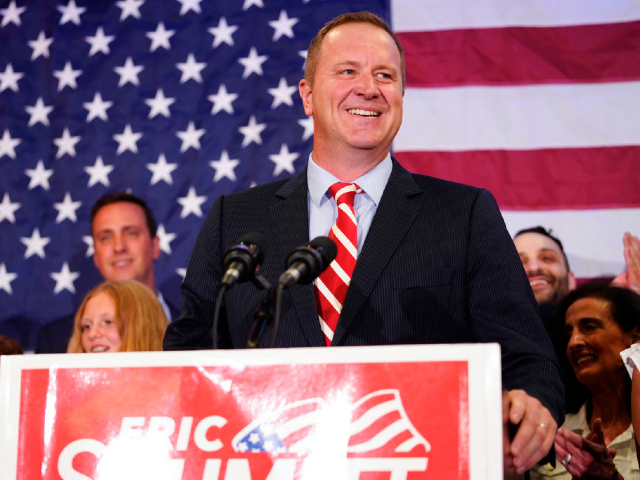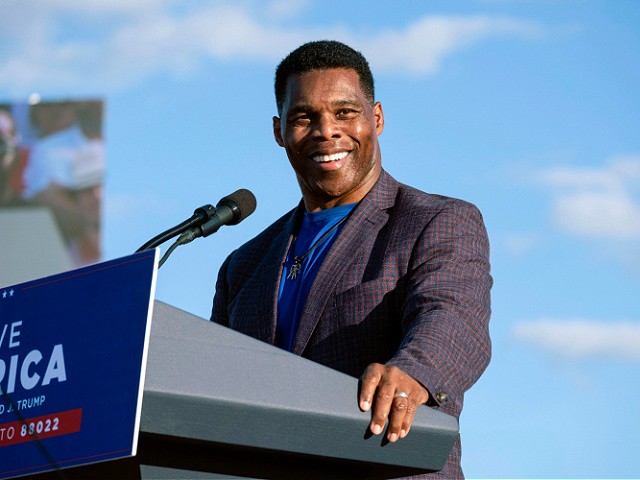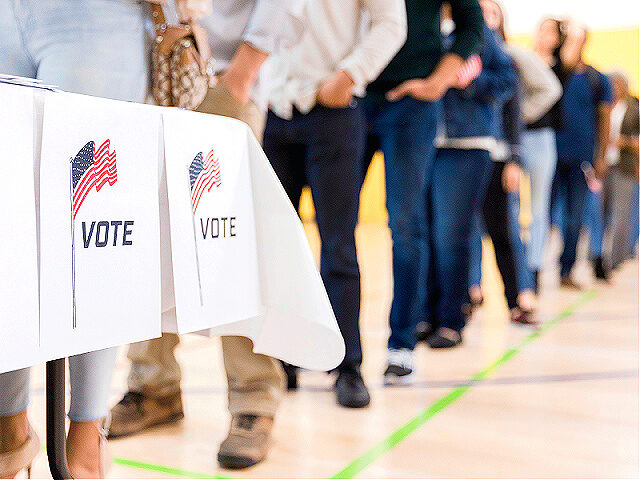Republicans could easily retake the U.S. Senate majority by focusing on a four-tiered strategy to lock in vulnerable GOP-held seats and flip vulnerable Democrat-held seats without getting distracted by the establishment media or Democrats.
Much of the media and political elite have spent the last week or so in a hullabaloo over whether or not the “red wave” in November is canceled now due to some Democrat wins in the dog days of summer and supposedly weaker-than-expected Republican nominees in battleground states.
But the fact of the matter is nothing has really changed from earlier this year before primary voters picked candidates to represent the party in November. A 50-50 Senate with a map where the GOP is playing lots of defense with a handful of pickup opportunities probably puts the chances at a Republican takeover of the chamber at about a coin toss or maybe slightly better than that.
In other words: All Republicans need to do to get the gavels back in the Senate is flip a net one seat.
Breaking down the map strategically, the pathway is actually very simple for Republicans and will really focus on just five states: Pennsylvania, Wisconsin, Arizona, Nevada, and Georgia. But to get there, to that main event on Nov. 8, Republicans first need to look at the bigger picture nationwide and then zoom in from there.
There are technically 34 U.S. Senate seats out of 100 up in November — 35 if one counts Oklahoma’s special election for the seat retiring Sen. James Inhofe (R-OK) is vacating — but really only about a dozen of them are potentially competitive.
As long as Republicans hold all the red state seats with no surprises — like both of Oklahoma’s seats, Alabama’s seat, North Dakota’s seat, Indiana’s seat, and so on — they will be in prime position to have a shot at the majority.
The first tier of seats to look at in this four-tier strategy includes those red states plus traditionally battleground states Republicans absolutely need to hold to win the majority: North Carolina, Ohio, Missouri, Florida, and Iowa.

State Attorney General Eric Schmitt speaks at an election-night gathering after winning the Republican primary for U.S. Senate at the Sheraton in Westport Plaza on August 02, 2022, in St Louis, Missouri. (Photo by Kyle Rivas/Getty Images)
Polling in Ohio and Iowa suggests that the GOP is likely to fare pretty well in both of those places, and Missouri seems to be a lock for Republicans after Attorney General Eric Schmitt won the GOP nomination there. North Carolina is tight, but Rep. Ted Budd (R-NC) is a strong general election candidate and Republicans have won this state in almost every single recent statewide national election dating back a decade. Florida, meanwhile, has been trending more and more red, and with Gov. Ron DeSantis (R) holding down the top of the ticket, it is very likely that Sen. Marco Rubio (R-FL) pulls this one off against Rep. Val Demings (D-FL) even if a couple of recent polls suggest a closer-than-expected race.
If Republicans hold all of those, then the focus shifts to the second tier of races: Seats the GOP are defending but are much tougher to hold. The two states in tier two are Wisconsin and Pennsylvania. In Wisconsin, Sen. Ron Johnson (R-WI) is a two-term incumbent seeking a third term after a decade-plus of legislative successes. His Democrat opponent is Lt. Gov. Mandela Barnes, a devout socialist whom Republicans have barely started exposing. While some polls show Johnson trailing slightly, expect this race to change a lot between now and election day. It is also worth noting how badly every pollster got Wisconsin in 2020. There is no reason to believe the pollsters have changed their ways, so it is likely Johnson is going to significantly over-perform there just as former President Donald Trump did.
Pennsylvania is a bit tougher for Republicans. After a grueling primary, Dr. Mehmet Oz emerged victorious from a recount that dragged the fight on weeks after he defeated businessman David McCormick this spring. Oz has been slow in getting off the starting block against Democrat nominee Lt. Gov. John Fetterman — and some public polls have suggested that Fetterman might be leading by close to 20 points. But other polling just released from Trafalgar suggests a much tighter race, and as Republicans focus on Fetterman’s radical views on crime, in particular, the race portends to tighten significantly. Even CNN’s Jake Tapper, a Pennsylvania native, admitted that this weekend.
Tier three is where things get interesting. This is where Republicans have opportunities to flip seats from Democrat control back into GOP hands. The three best pickup opportunities for the GOP in November this year are Nevada, Arizona, and Georgia.
In Nevada, some polling has shown GOP nominee Adam Laxalt leading incumbent Democrat Sen. Cathy Cortez Masto (D-NV) — while other polls have shown Masto in the lead. In Arizona, the GOP’s Blake Masters just emerged from the primary and the first poll shows him down against Sen. Mark Kelly (D-AZ) — but Republicans expect to unify and put heat on Kelly soon so expect that to tighten. And in Georgia, GOP nominee Herschel Walker — the one-time Heisman Trophy winner and retired NFL star running back — is running neck-and-neck with incumbent Democrat Sen. Raphael Warnock (D-GA). Warnock has loads of personal baggage, and so does Walker, so that race is sure to be a festival of mudslinging between the two sides.

In this Sept. 25, 2021, file photo, Senate candidate Herschel Walker speaks during former President Donald Trump’s Save America rally in Perry, GA. (AP Photo/Ben Gray, File)
The takeaway from all of the above is simple, though: If the GOP can hold tier one, then it has a clear path to the Senate majority through tier three depending on what happens in tier two. In a scenario where the GOP holds all of tier one and both of the second tier’s seats, Republicans need only one seat from tier three to take the majority. In a scenario where the GOP holds all of tier one, and loses one out of tier two, the GOP just needs two out of three from tier three. And in a scenario where the GOP holds all of tier one but loses both of tier two, then the GOP can still get to the majority by winning all three of the tier three seats.
Herein lies the best part for Republicans: they can get to the majority by hitting one of those scenarios with tiers one through three without even talking about tier four races, which are all GOP pickup opportunities albeit potentially harder races for Republicans. Tier four races include, most notably, New Hampshire — the likeliest in this tier to change hands — but also places like Colorado and Illinois. All three of those states have elected GOP senators in recent history. But in addition to those states, Republicans are also bullish on the possibilities in Washington State, where GOP nominee Tiffany Smiley is polling close with underperforming Sen. Patty Murray (D-WA), and possibly too in Connecticut where longtime Sen. Richard Blumenthal (D-CT) faces Trump-backed GOP nominee Leora Levy.
So, again, while some in the establishment media may declare this election over 70-something days before it happens, this one is far from over — and might even be a GOP advantage depending on how some of these contests develop post-Labor Day.

COMMENTS
Please let us know if you're having issues with commenting.